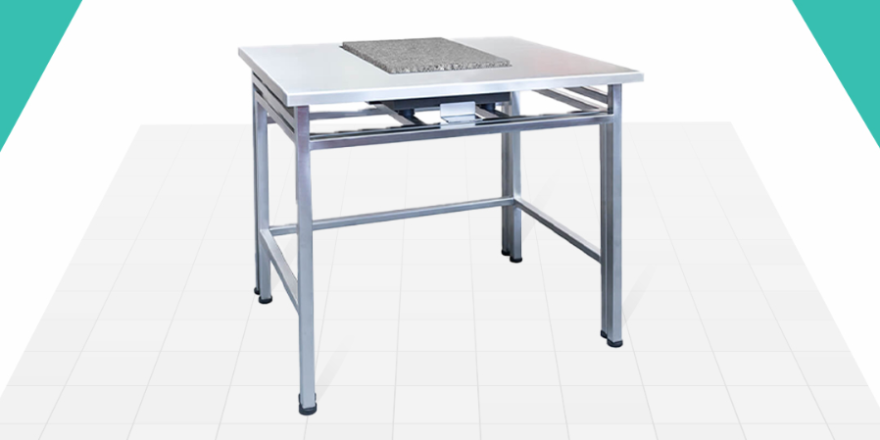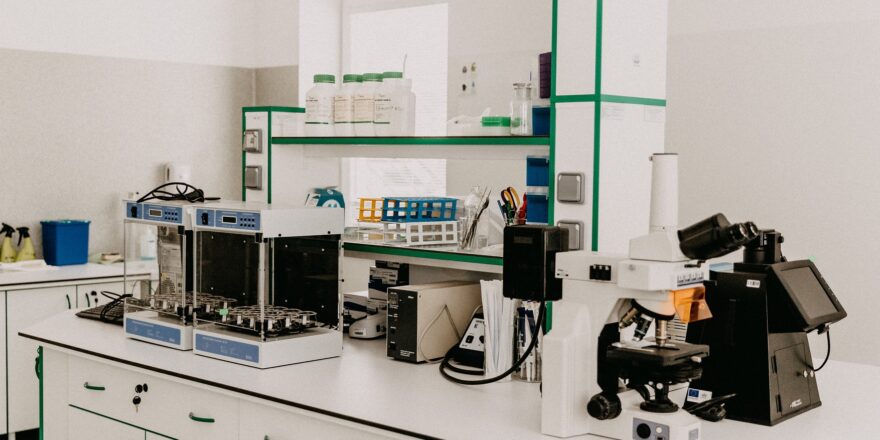The hub of scientific experiments and discovery is the laboratory, and there are unchangeable realities that everyone can agree on, even though there are several perspectives and questions regarding the optimum use of research space. A lab’s structure and layout make scientific study easy and feasible and keep researchers as comfortable as possible. The best lab layout allows for this without needing more workers while increasing efficiency and reducing mistakes.
To increase productivity, ensure safety, and optimise research workflows, its design, specifically the selection of furniture, is crucial. With a focus on furniture for your lab, particularly modular lab furniture, and the contributions of lab furniture manufacturers like Santech Labs, this thorough guide will delve deeply into the art and science of designing a practical and ergonomic lab layout. But let us first understand what ergonomics furniture means.
Understanding Ergonomics Laboratory Furniture
The ergonomic lab design aims to increase productivity and efficiency so that every aspect of the lab’s layout, including the furniture, workspaces, and working conditions, is tailored to each worker’s specific job requirements. To prevent job discomfort, soreness, and potential damage, it also means that variations in responsibilities and body proportions should be taken into account. Ergonomic it encompasses adjustable workstations, chairs, and lighting, all tailored to suit the specific tasks conducted in the lab.
Now that you know what ergonomic furniture is, let us look at the pointers to consider while buying ergonomic furniture.
Factors To Consider While Purchasing Ergonomics Furniture
When selecting furniture for your lab, consider the following ergonomic features:
- Adjustability: Look for furniture that can be customised to fit individual researchers. This includes adjustable chair height, monitor stands, and workbench heights.
- Support: Ergonomic chairs should provide lumbar support and cushioning to reduce back strain.
- Workspace Layout: Arrange workstations to minimise reaching and twisting. Keep repeatedly used tools within easy reach.
- Anti-Fatigue Mats: Consider using anti-fatigue mats in areas where researchers stand for extended periods, such as lab benches. These mats reduce pressure on the feet and legs.
Now that you know the factors to remember while buying laboratory furniture let us understand what a modular lab is.
Understanding Modular Laboratory
A modular lab is a lab that is planned and constructed to fit any space using premium prefabricated components. Any application can benefit from modular labs, but facilities looking for a simple lab to move or reconfigure will find them especially useful. These labs offer the adaptable, flexible, precise, controlled, safe, and secure environment your laboratory requires to conduct research and testing successfully. This versatility minimises downtime between research activities and maximises lab space utilisation. Santech Labs, a lab furniture manufacturer, has recognised the potential of modular lab furniture and offers a wide range of customisable solutions to cater to diverse research needs.
Let us now move towards learning how to plan your lab layout before you plan to buy furniture for your lab.
Planning The Lab Layout
You need to keep several pointers in mind when planning your laboratory design. Let us explore:
1. Assessing Space
Before designing your lab layout, accurately measure and assess the available space. Consider the following:
- Room Dimensions: Measure the lab’s length, width, and height. Note any architectural features affecting the layout, such as columns or windows.
- Existing Fixtures: Identify fixed elements like doors, windows, and utility connections (gas, water, electrical) that you need to work around.
- Traffic Flow: Plan for efficient pathways between workstations to avoid congestion.
2. Workflow Analysis
A workflow analysis involves understanding how tasks are performed in your lab. Steps include:
- Observation: Observe researchers as they work to identify their movements and interactions with equipment.
- Task Sequencing: Determine the logical order of tasks—for example, place equipment and materials near where they are needed.
- Grouping Equipment: Organise equipment and supplies into functional zones based on their use—for instance, separate areas for sample preparation and analysis.
3. Safety Regulations
Ensure that your lab layout complies with safety regulations and guidelines. This includes:
- Emergency Exits: Maintain clear paths to emergency exits and safety equipment like eyewash stations and fire extinguishers.
- Chemical Storage: Properly store and label chemicals by safety standards.
- Ventilation: Consider the placement of fume hoods and ventilation systems to ensure the safe dispersion of chemical fumes.
Now, let us move towards choosing the right modular lab furniture for your comfort and enhanced workflow.
Choosing The Right Laboratory Furniture
1. Lab Benches And Workstations
When selecting lab benches and workstations, focus on the following:
- Durability: Choose materials that can withstand the demands of your research activities, such as chemical resistance for chemistry labs.
- Flexibility: Opt for modular designs that allow for easy reconfiguration as research needs change.
- Ergonomics: Ensure workbench heights can be adjusted to accommodate different researchers’ preferences.
2. Lab Chairs And Seating
Selecting the right lab chairs is crucial for researcher comfort and productivity. Consider:
- Adjustability: Chairs should be height-adjustable to accommodate various work surfaces and individual preferences.
- Lumbar Support: Look for chairs that provide proper lumbar support to reduce the risk of back pain.
- Cushioning: Cushioned seats and backrests contribute to overall comfort, especially during long experiments.
3. Storage Solutions
Adequate storage is essential for keeping your lab organised. Consider:
- Cabinets And Shelving: Install cabinets and open shelving units to keep equipment, chemicals, and supplies organised and easily accessible.
- Labelling: Implement a labelling system to identify and locate items quickly.
- Safety Cabinets: Use designated safety cabinets for storing hazardous chemicals and materials, following safety regulations.
Bottom Line
Creating an efficient and ergonomic lab layout with the right furniture is a complicated process that requires detailed planning and attention. Incorporating the strategies discussed in this comprehensive guide can enhance your laboratory’s productivity, safety, and overall functionality. Santech Labs provides a dynamic and adaptable solution that caters to the evolving needs of modern research.




